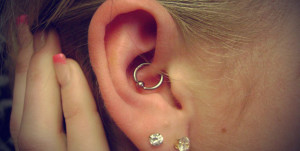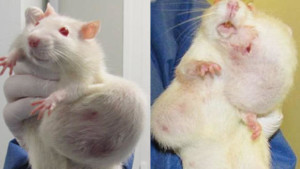The mind is a powerful thing, maybe more so than you would think. As the daughter of a police officer, I have heard multiple stories regarding the power of the mind. One that always sticks out to me involves another officer that my father knew. The officer was shot in the foot, and the wound seemed relatively minor. However, on the way to the hospital and for the entire duration of his stay, the officer repeatedly said, “I am going to die.” Believe it or not, he did. Stories such as this cause many to wonder if mental disorders can relate to this concept. Do humans just believe that they have a mental illness when in fact one is not present?
While I have been lucky enough to not personally have a mental health illness, I know a lot of people who suffer from them. Mental illnesses affect not only the person who has it, but also all of the people surrounding the individual. There are hundreds of classified mental illnesses, and  they include autism, eating disorders, depression, anxiety, and obsessive-compulsive disorder, which is commonly known as OCD. I have recently found myself wondering about all aspects of mental disorders. What causes them? Are they able to be truly cured? What even is a mental illness?
they include autism, eating disorders, depression, anxiety, and obsessive-compulsive disorder, which is commonly known as OCD. I have recently found myself wondering about all aspects of mental disorders. What causes them? Are they able to be truly cured? What even is a mental illness?
According to the National Alliance on Mental Illness, “a mental illness is a condition that impacts a person’s thinking, feeling or mood and may affect his or her ability to relate to others and function on a daily basis. Each person will have different experiences, even people with the same diagnosis.” Mental illnesses vary extensively from diseases. As opposed to diseases, such as cancer or heart disease, mental illnesses are diagnosed through “descriptions of what clinicians observe people do or say”. There is no true test to determine whether or not someone has a mental illness; the diagnosis is based on observations and behavior patterns. This method leads to a major problem: delay in recovery. Psychologists are “still diagnosing these illnesses by observations rather than using biomarkers, the method the rest of [the] medicine world uses to identify illnesses. Consequently, treatment often doesn’t arrive until late in the course of the illness. This lack of timely treatment has led neuropsychiatric disorders to become the leading cause of disability in the world, more than heart disease, cancer or injuries.” Another problem with the diagnoses of mental disorders is that “[d]espite being common, mental illness is under diagnosed by doctors. Less than half of those who meet diagnosis criteria for psychological disorders are identified by doctors.” According to the Center for Disease Control, or the CDC, roughly 36,000 Americans die by suicide every year (McLean). All of these deaths are a product of some mental illness. The unfortunate part is that 36,000 people who die from suicide does not account for the thousands of others who attempt to take their own life each year. According to Suicide Awareness Voices of Education, or SAVE, “there is one suicide for every estimated 25 suicide attempts.” This means that at least 900,000 people attempt to take their own life each year. That is roughly 2,466 per day, and 103 each hour. These rates are the highest among 15-24 year olds, as suicide is the second leading cause of death for this age group (SAVE). I believe that the rates are highest among this age group because this time is typically when an individual begins to first notice signs of the mental illness. Without knowing of any way to cope with the symptoms of a mental disorder, tackling every day life can be excruciating. Add high school or college to that mix, and it seems clear why suicide rates are the highest among this age range. While you would assume that the suicide rates between men and women are fairly even, this is not the case. “Suicide among males is 4x’s higher than among females. Male deaths represent 79% of all US suicides (SAVE). This leads me to wonder: do males suffer from mental illness at a higher rate than females?
People can contract mental illnesses by all different means. Some mental illnesses are caused more so by genetics, such as schizophrenia, and others are a result of the environment, such as depression. The Mayo Clinic explains that “certain genes may increase your risk of developing a mental illness, and your life situation may trigger it.” Therefore, not everyone who has a gene for a mental disorder will suffer from it.
People of any age, race, and gender can suffer from a mental illness. However, most disorders become prominent young, as “50%… begin by age 14 and 75% of mental health conditions develop by the age of 24” (Nami). I believe that an efficient way to test the number of people with mental illnesses would be through anonymous random surveys, or by records of psychologists.
While the World Health Organization, also known as the WHO, knows that there is not sufficient research regarding gender and mental illness, they have concluded that women suffer from mental disorders more than men. I believe that there is such little research on the gender differences in mental illnesses because of the difficulty involved in studying mental illnesses in general. A hypothesis that I have for why women suffer from mental illnesses at a higher rate than men is that women often go through more traumatic experiences. “At least one in five women suffer rape or attempted rape in their lifetime” (WHO). Women also suffer from violence more than men. Furthermore, women get paid less than men for the same job, which therefore puts them at a socioeconomic disadvantage (WHO). Post Traumatic Stress Disorder is a common result of sexual violence. Depression can also be triggered by the inequalities and subordination women face.
According to a study at Oxford University, “women are up to 40% more likely than men to develop mental health conditions.” Women are also 75% more likely to suffer from depression and anxiety as opposed to men. However, substance abuse and misuse disorders are much more likely in men- about 2 and a half times more than in women (Ball). These results come form “an analysis of 12 large-scale epidemiological studies carried out across the world since the 1990s… The analysis used only large-scale studies, which looked at the general population” (Bell). I think that the most interesting discovery made in this study is that “women tend to suffer more from what we call ‘internal’ problems like depression or sleep problems. They take out problems on themselves, where men have externalizing problems, where they take things out on the environment, such as [through] alcohol and anger problems” (Bell). This shows that women and men generally handle things differently, which is what I believe attributes to the difference in suicide rates.
One person who suffered from a mental illness that will always stick out to me is Robin Williams. I think that he is an excellent example about how people are able to mask their true emotions and fake a smile. Robin William’s suicide sparked a lot of attention to depression and mental  illness throughout America. He proved that money and material things do not matter and that they can not make you happy. While nice cars, lavish vacations and a beautiful home can mask how you are feeling temporarily, they will never make your problems go away. Money does not equal happiness. If mental illnesses really were all in your head, clearly Robin Williams would not have been a sufferer. He would have quickly been able to overcome his issues through his rise to fame, and the life he created for himself.
illness throughout America. He proved that money and material things do not matter and that they can not make you happy. While nice cars, lavish vacations and a beautiful home can mask how you are feeling temporarily, they will never make your problems go away. Money does not equal happiness. If mental illnesses really were all in your head, clearly Robin Williams would not have been a sufferer. He would have quickly been able to overcome his issues through his rise to fame, and the life he created for himself.
Obviously “nobody chooses to have cancer. Similarly, nobody chooses to have a mental illness… you cannot just snap out of it.” Mental disorders are not all in your head, figuratively or literally. They impact every part of the body, from the heart to the lungs. One cannot just decide to not have a mental illness one day. If this were the case, not a single person in the world would suffer from a mental disorder. “1 in every 5 adults experiences a mental health condition every year. 1 in 20 lives with a serious mental illness such as schizophrenia or bipolar disorder” (Nami). These numbers are terribly high. Optimistically, within the near future, mental health awareness will become more prominent throughout society. Hopefully it does not take another shocking suicide to do so.
Mental illnesses are in no way all in our heads. They exist in every aspect of life. While there are no true cures for mental disorders, there are things that can dramatically improve the life of those who suffer from them. Numerous medicines have been manufactured, and there are also therapists in nearly every town. Sometimes, the best way to help ease the pain of a mental illness is to surround yourself with loving friends and family. I am sure that I am not alone when I say that hopefully, no one with a mental disease is ever told “it’s all in your head” again.
 As a major carb lover, I could never imagine my life without breads or pastas. However, low-carb and no carb diets seem to be increasingly common in our current society. A low-carb diet is completely out of the question for me, I mean who wants to give up bread? Recent diet crazes lead me to wonder which type of diet is more beneficial: low-carb or the traditional low fat?
As a major carb lover, I could never imagine my life without breads or pastas. However, low-carb and no carb diets seem to be increasingly common in our current society. A low-carb diet is completely out of the question for me, I mean who wants to give up bread? Recent diet crazes lead me to wonder which type of diet is more beneficial: low-carb or the traditional low fat? following a low-fat diet.” However, the study does not show the average weight lost, the regulations of those on the low-fat diets, or the complete duration of the study. Furthermore, I am curious as to whether either diet has any significant health effects.
following a low-fat diet.” However, the study does not show the average weight lost, the regulations of those on the low-fat diets, or the complete duration of the study. Furthermore, I am curious as to whether either diet has any significant health effects. the data results. Usually, those who are obese can lose more weight at a faster rate since they have more weight to lose. If you took a 100-pound person and a 300-pound individual and put them on the same diet and exercise pattern, the person who weighs 300 pounds would generally lose weight much quicker. Also, obesity tends to create multiple health issues and therefore, I wonder if either diet can increase the negative health problems. According to Livescience, reducing carbs reduces insulin levels, and therefore, low-carb diets may be harmful to those who suffer from diabetes.
the data results. Usually, those who are obese can lose more weight at a faster rate since they have more weight to lose. If you took a 100-pound person and a 300-pound individual and put them on the same diet and exercise pattern, the person who weighs 300 pounds would generally lose weight much quicker. Also, obesity tends to create multiple health issues and therefore, I wonder if either diet can increase the negative health problems. According to Livescience, reducing carbs reduces insulin levels, and therefore, low-carb diets may be harmful to those who suffer from diabetes.































 I
I


